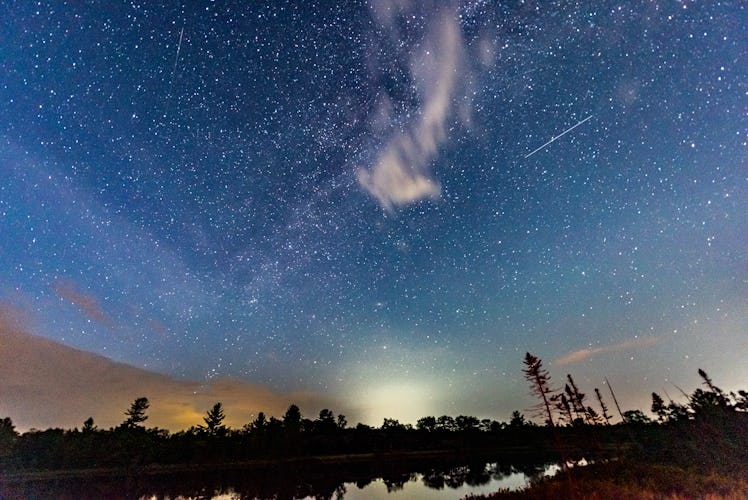This Elusive Meteor Shower Is Grazing Our Skies — Here’s How To See It
The Arietids are here. So long as you know where to find them.

As we say goodbye to spring and welcome in the warmer weather of summer, there’s another meteor shower around the corner, and it’s a fascinating one. Following last month’s Lyrids meteor shower, coming up next is the Arietids — which is also the most active daytime meteor shower of all. Here’s what you need to know.
What are the Arietids meteors?
The Arietids were first discovered in 1947 by astronomers at the Jordell Bank Radio Telescope, according to EarthSky.org. It’s believed that the meteor shower comes from comet 96P/Machholz or is part of the Machholz Complex, which is a combination of two comet groups.
What makes the Arietids really special is that it’s a shower that’s mostly seen in the daytime, unlike the other meteor showers, which are most active when it’s dark.
When will the Arietids meteor shower peak?
The Arietids will be active from May 29 to June 17 and will peak on the morning of June 7, 2023.
“You might catch some Arietids that morning in the dark hour before dawn,” EarthSky.org notes.
It’s possible that the moonlight might interfere with being able to see the meteor shower if it’s bright enough, and it’s hard to tell exactly when meteor showers peak, so June 7 is an estimated peak, not a guarantee.
How can I watch the Arietids meteor shower?
You don’t need any special equipment to see the Arietids shower, the trick to spotting it will be to “catch them in the narrow window after the radiant rises, but before the visible breaking of dawn,” EarthSky.org suggests.
The radiant point, which is the point in the sky where the meteors seem to radiate from, is in the Aries constellation, which will be in the east before sunrise.
“The meteors will be moving out in all directions from the radiant,” per EarthSky.org. “Therefore, many will never breach your horizon. But some meteors will move upward in your eastern predawn sky.
Given how active the meteor shower is during the daytime, it’s not as easy to predict how many meteors you can expect to see with the kids. EarthSky.org estimates the Arietids could have “a rate of 60 meteors per hour, and perhaps as high as 200 meteors per hour.” (It’s worth noting one expert said that if you try to look at the sky in the mornings surrounding June 7, he believes that you’ll only see one meteor per morning of viewing. So, take these estimates with a grain of salt.)
Since this event will be in June, the weather is likely to be perfect for kiddos who want to see if they can spot any meteors shooting through the sky. Bring chairs or a blanket and face east to see any meteors shooting from the horizon.
And remember, the best time to try to catch the elusive Arietids will be on June 7, in the dark hour before dawn — so long as the moonlight isn’t too bright.
Up next is the Perseids meteor shower.
This article was originally published on